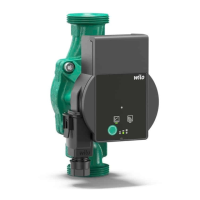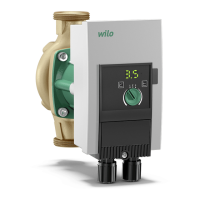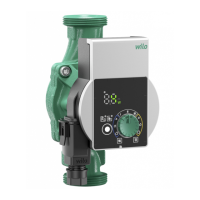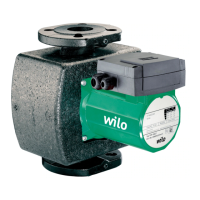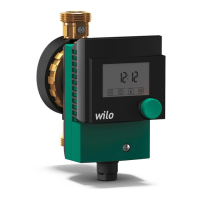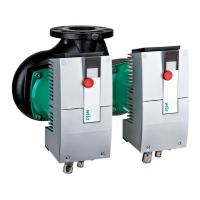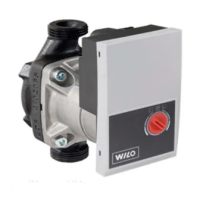en Installation and electrical connection
22 WILO SE 2019-04
Fig.15: Checking the axial alignment with a
calliper gauge
Fig.16: Checking the axial alignment with a
calliper gauge–circumferential check
Using a calliper gauge, circumferentially check the distance between the two coupling
halves.
Fig.17: Adjusting screw A for axial safeguard
Fig.18: Fastening screws B of coupling halves
▪Connect the coupling halves once correctly aligned.
The tightening torques for the coupling are listed in the table “Tightening torques for
adjusting screws and coupling halves”.
▪Install the coupling guard.
Coupling parameterd
[mm]
Tightening torque for ad-
justing screw A [Nm]
Tightening torque for ad-
justing screw B [Nm]
80, 88, 95, 103
4 13
110, 118
4 14
125, 135
8 17.5
140, 152
8 29
160, 172
15 35
180, 194
25 44
200, 218
25 67.5
225, 245
25 86
250, 272
70 145
280, 305
70 185
315, 340
70 200
350, 380
130 260
400, 430
130 340
440, 472
230 410
Table7: Tightening torques for adjusting screws and coupling halves
6.7.2 Alignment of the pump unit
Any deviations in the measuring results indicate a misalignment. In this case, the unit
must be realigned to the motor.
▪Loosen the hexagon head screws and the counter nuts on the motor.
▪Place shims under the motor feet until the height difference is compensated.
▪Pay attention to the axial alignment of the coupling.
▪Tighten the hexagon head screws again.
▪Finally, check the function of the coupling and shaft. The coupling and shaft must be
easy to turn by hand.
▪After correct alignment, mount the coupling guard.
The tightening torques for the pump and motor on the baseplate are listed in the table
“Tightening torques for pump and motor”.
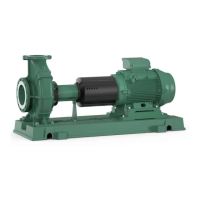
